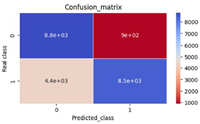Differentials of the basis in Clifford Geometric Algebra
Abstract
In this paper we discuss the dynamic effects of the varying frames. The differential of frame or basis vectors is always equivalent to a linear transformation of the frame, and the linear transformation is not the same in different contexts. In differential geometry, the linear transformation is the connection operator. While in quantum mechanics, the operator algebra corresponds to the differentials of matrices. Corresponding to the variation of the metric, the variation of the frame contains a unusual fourth-order tensor. We also derive the Lie differential of the frame corresponding to the Lorentz transformation group. The definition of differential of the frame is different, so the corresponding linear transformation is also different. In this paper, the unified point of view to deal with the variation of frame or basis vectors will bring great convenience to the research and application of Clifford algebras.
References
[1]Clifford WK. Applications of Grassmann’s Extensive Algebra. American Journal of Mathematics. 1878; 1(4):350-358, doi: 10.2307/2369379
[2]Grassmann HG. Extension Theory, (Die Ausdehnungslehre von 1862) Lloyd C. Kannenberg, trans. American Mathematical Society, Rhode Island. London Mathematical Society Publishing; 2000.
[3]Hamilton WR. Elements of quaternions. Longmans, Green, & Company Publishing; 1866.
[4]Doran C, Lasenby A. Geometric algebra for physicists. Cambridge University Press Publishing; 2003.
[5]Macdonald A. Linear and geometric algebra. Nottingham: Alan Macdonald Publishing; 2010.
[6]Pozo JM, Sobczyk G. Geometric algebra in linear algebra and geometry. Acta Applicandae Mathematica. 2002; 71: 207-244. doi:10.1023/A:1015256913414
[7]Hestenes D. Observables, operators, and complex numbers in the Dirac theory. J. Math. Phys. 1975; 16:556-572. doi:10.1063/1.522554
[8]Keller J, Rodriguez-Romo S. Multivectorial representation of Lie groups. Int. J. Theor. Phys. 1991; 30: 185-196. doi:10.1007/BF00670711
[9]Shirokov DS. On inner automorphisms preserving subspaces of Clifford algebras. Adv. Appl. Clifford Algebras. 2021; 31: 30-52. doi:10.1007/s00006-021-01135-6
[10]Keller J. Spinors and Multivectors as a Unified Tool for Spacetime Geometry and for Elementary Particle Physics. Int. J. Theor. Phys. 1991; 30: 137-184. doi:10.1007/BF00670710
[11]Ablamowicz R, Sobczyk G. Lectures on Clifford (geometric) algebras and applications. Available online: https://link.springer.com/book/10.1007/978-0-8176-8190-6 (accessed on 20 June 2024)
[12]Ablamowicz R. Clifford Algebras: Applications to Mathematics, Physics, and Engineering. Available online: https://link.springer.com/book/10.1007/978-1-4612-2044-2 (accessed on 20 June 2024)
[13]Lounesto P. Clifford Algebras and Spinors. Cambridge Univ. Press; 2001.
[14]Breuils S, Tachibana K, Hitzer, E. New applications of Clifford’s geometric algebra. Adv. Appl. Clifford Algebras. 2022; 32:17-55. doi:10.1007/s00006-021-01196-7
[15]Gu Y-Q. A Note on the Representation of Clifford Algebras. J. Geom. Symmetry Phys. 2021; 62: 29-52. doi:10.7546/jgsp-62-2021-29-52
[16]Snygg J. Clifford Algebra-A Computational Tool For Physicists. Oxford University Press; 1997.
[17]Snygg J. A new approach to differential geometry using Clifford’s geometric algebra. Springer Science & Business Media Publishing; 2011.
[18]Hehl FW, Von der Heyde P, Kerlick GD, Nester JM. General relativity with spin and torsion: Foundations and prospects. Rev. Mod. Phys. 1976; 48: 393-416. doi:10.1103/RevModPhys.48.393.
[19]Nester JM. Special orthonormal frames. Journal of mathematical physics. 1992; 33: 910-913,
[20]Dimakis A, Muller-Hoissen F. Clifform calculus with applications to classical field theories. Classical and Quantum Gravity. 1991; 8: 2093. doi:10.1088/0264-9381/8/11/018
[21]Nester JM, Tung RS, Zhytnikov VV. Some Spinor-Curvature Identities. Classical and Quantum Gravity. 1994; 11: 983. doi:10.1088/0264-9381/11/4/014
[22]Gu Y-Q. Theory of Spinors in Curved Space-Time. Symmetry. 2021; 13: 1931, doi:10.3390/sym13101931
[23]Gu Y-Q. Clifford A. Hypercomplex Numbers and Nonlinear Equations in Physics. Geometry Integrability and Quantization. 2023; 25: 47-72. doi:10.7546/giq-25-2023-47-72
[24]Gu Y-Q. Clifford Algebra and Hypercomplex Number as well as Their Applications in Physics. J. Appl. Math. Phys. 2022; 10: 1375-1393. doi:10.4236/jamp.2022.104097
[25]Gu Y.-Q. Miraculous Hypercomplex Numbers. Mathematics and Systems Science. 2023; 1: 2258. doi:10.54517/mss.v1i1.2258
[26]Calvet RG. On Matrix Representations of Geometric (Clifford) Algebras. J. Geom. Symmetry Phys. 2017; 43: 1-36. doi:10.7546/jgsp-43-2017-1-36
[27]Cartan É. Riemannian Geometry in an Orthogonal Frame (translated into English by V. Goldberg). World Scientific Publishing; 2001.
[28]Hestenes D, Sobczyk G. Clifford algebra to geometric calculus: a unified language for mathematics and physics (Vol. 5). Springer Science & Business Media Publishing; 2012
[29]Morozov O. Moving coframes and symmetries of differential equations. J. Phys. Am. 2002; 35: 2965- 2977. doi: 10.1088/0305-4470/35/12/317
[30]Kogan IA, Olver PJ. Invariant Euler-Lagrange equations and the invariant variational bicomplex. Acta Appl. Math. 2003; 76: 137-193. doi:10.1023/A:1022993616247
[31]Arnaldsson Ö. Involutive moving frames. Diff. Geom. Appl. 2020; 69: 101603. doi:10.1016/j.difgeo.2020.101603
Copyright (c) 2024 Yingqiu Gu

This work is licensed under a Creative Commons Attribution 4.0 International License.











